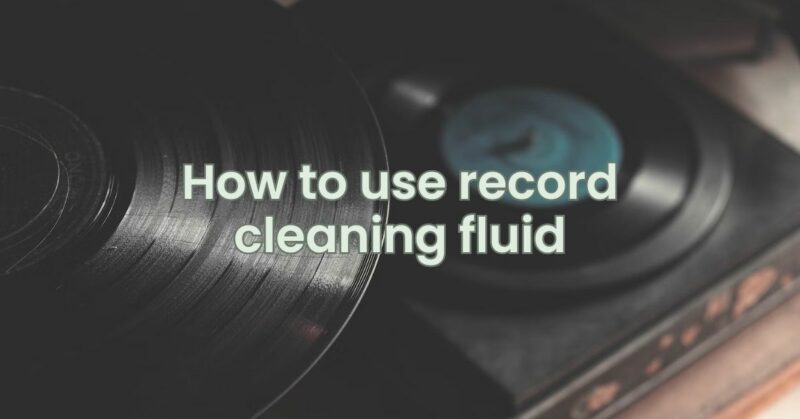Vinyl records have been captivating music enthusiasts for generations, providing a rich and authentic listening experience. To ensure that your cherished vinyl collection retains its optimal sound quality and longevity, proper maintenance and cleaning are essential. Record cleaning fluid is a key component in this process, effectively removing dirt, dust, and contaminants from the record’s surface. In this comprehensive guide, we’ll take you through the step-by-step process of using record cleaning fluid to care for your vinyl records and enhance your listening pleasure.
Understanding Record Cleaning Fluid:
Record cleaning fluid is a specially formulated solution designed to clean vinyl records effectively. It is essential for removing stubborn dirt, fingerprints, oils, and static electricity that can accumulate on the record’s surface and affect sound quality. Record cleaning fluids are typically alcohol-free to avoid any potential damage to the vinyl material.
Step-by-Step Guide to Using Record Cleaning Fluid:
- Gather Supplies:
Before you start the cleaning process, ensure you have the necessary supplies ready:
- Record cleaning fluid: Choose a high-quality, vinyl-specific cleaning solution that is alcohol-free and designed to effectively clean records.
- Soft, lint-free microfiber cloth or record cleaning brush: Use a soft cloth or brush specifically made for vinyl records to avoid scratching the surface.
- Distilled water: If required, use distilled water for dilution or rinsing purposes.
- Spray bottle (optional): A spray bottle can be helpful for evenly applying the cleaning fluid.
- Pre-Cleaning Inspection:
Inspect the vinyl record for visible dirt, dust, fingerprints, or stains. Handle the record with clean, dry hands or wear lint-free gloves to avoid leaving fingerprints on the surface.
- Applying Record Cleaning Fluid:
To clean the record effectively with record cleaning fluid, follow these steps:
- Lay the record flat on a clean surface, ensuring it is secure and stable.
- If using a spray bottle, spray a light mist of the cleaning fluid onto the surface of the record. Alternatively, you can apply a few drops of the fluid onto a soft microfiber cloth or record cleaning brush.
- Gently spread the cleaning fluid across the record’s surface using the cloth or brush. Follow the grooves in a circular motion, working from the center towards the outer edges. Avoid applying excessive pressure to prevent damage to the vinyl.
- Drying and Rinsing:
After applying the cleaning fluid, allow it to sit on the record’s surface for a few moments to lift dirt and contaminants effectively. Then, use a dry, clean section of the microfiber cloth to gently remove the cleaning fluid from the record. Make sure to dry the record thoroughly to prevent water spots or residue.
If the cleaning fluid requires rinsing, dampen a separate microfiber cloth with distilled water and gently wipe the record’s surface to remove any remaining residue from the cleaning fluid.
- Final Drying:
Once you have removed the cleaning fluid and any rinse water, use a dry, clean microfiber cloth to ensure the record is completely dry before playing or storing it. Be gentle and thorough during this step to avoid leaving any moisture behind.
- Storage:
Once the record is clean and dry, store it properly in a clean, acid-free inner sleeve, and keep it in an upright position in a dust-free and temperature-controlled environment.
Conclusion:
Using record cleaning fluid is an essential step in maintaining your vinyl records’ sound quality and longevity. By following this step-by-step guide, you can effectively clean your vinyl records, removing dirt, dust, and contaminants, and ensure a superior listening experience with each play. Regularly cleaning your vinyl records with record cleaning fluid, combined with proper storage and handling, will help preserve their authenticity and sound quality, allowing you to enjoy your cherished vinyl collection for years to come.

